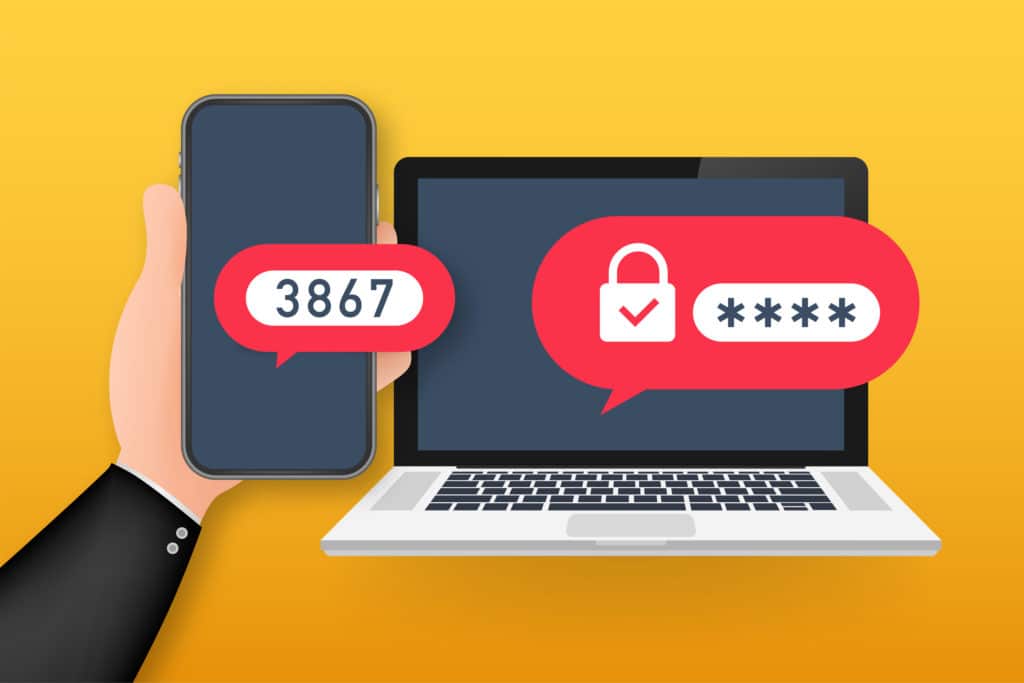
Businesses that want to stay competitive and resilient need to have a robust cloud infrastructure. This means that most of their processes and data are available from anywhere. It also means that all that sensitive information is generally only being protected by employee passwords.
Password compromise is the main cause of cloud data breaches. The combination of poor password habits (like using weak passwords) and the fact that attacks on cloud accounts have increased during the pandemic, make cloud security a high priority.
In 2020, the volume of attacks on cloud accounts rose by 630%. Hackers are getting even more aggressive about trying to break into company accounts to steal data, locate credit card details, and conduct malware attacks.
What’s one step you can take to mitigate nearly all cloud takeover attempts?
Use multi-factor authentication (MFA). This one security tactic is 99.9% effective at blocking fraudulent sign-ins on cloud accounts.
Yet only a small percentage of SMBs use MFA. This is largely because they don’t implement it properly and get resistance from employees who don’t want to add an additional step to their workflow.
Because of the effectiveness of MFA and the increasing danger to cloud accounts, this is a “must-have” security safeguard. You can get over staff resistance and implement MFA more effectively following the steps below.
Guide Employees Through the Change (Change Management)
Business owners and managers often make the mistake of deciding to implement a new protocol to their team’s workflow without telling employees until it’s happening.
They don’t spend time explaining why or addressing employee concerns. Thus, many business change initiatives fail as a result.
No matter what size business you have, you can benefit from using some change management tactics. Change management is about guiding users through a change to help things go more smoothly and reduce pushback.
Some tenets of this approach include:
- Letting users know about an upcoming change several weeks in advance
- Identifying areas of resistance and addressing those with employees
- Letting employees know how they benefit (not just how the company benefits)
- Supporting users with training and ongoing communications
Couple Multi-Factor Authentication with a Single Sign-On (SSO)
The thought of having to take longer to sign in to all the various work applications used throughout the week is enough to make anyone resist implementing MFA. Companies also don’t want to hurt user productivity.
You can address this issue by coupling MFA with an SSO application. This will allow users to log in and go through the MFA prompt just once and gain access to all their accounts.
This improves productivity, user acceptance of multi-factor authentication, and account security.
Train Employees Properly on the Workflow
While MFA might seem simple to use and employees may already be using it with their personal accounts, you should still hold a training session on the new process.
People are less resistant to a new process if they have been trained and allowed to gain proficiency. Being asked to do something without a lot of guidance is a recipe for that new process to fail. Even a short training session can make a big difference in user acceptance of MFA.
Give Your Team Options for Use of MFA
When people are given options on how to implement a new workflow process, they gain some ownership. This can result in less pushback when you implement MFA.
There are a few different authentication options that you can use, and providing between 2-3 choices can increase someone’s willingness to adopt the new MFA requirement.
Some of the options for MFA use you could offer include:
- Getting the authentication code by SMS
- Getting the authentication code through an app
- Authentication by using a security key
- Authenticating with a fingerprint scan
Provide After-Implementation Support for at Least 30 Days
Users are bound to run into problems and questions right after they adopt a new process and begin using it daily. Be proactive and ensure that MFA has a chance to become the “new normal” by providing post “Go-Live” support.
For about 30-days after MFA deployment, you should check in with employees to see if they have any questions or concerns about the process. It’s also a good idea to have an IT support contact, like Unity IT, that users can contact to get them through any road bumps.
That month of after-implementation support can keep your users from getting frustrated and reverting to their old way of doing things and improve the success of the workflow change.
Get Help Deploying MFA With Time-Saving Single Sign-On
You don’t have to go it alone when deploying an important new technology change. Unity IT can help your Fresno area business with an effective deployment of MFA and SSO to improve security and productivity.
Contact us today to schedule a technology consultation at 559-297-1007 or reach out online.

